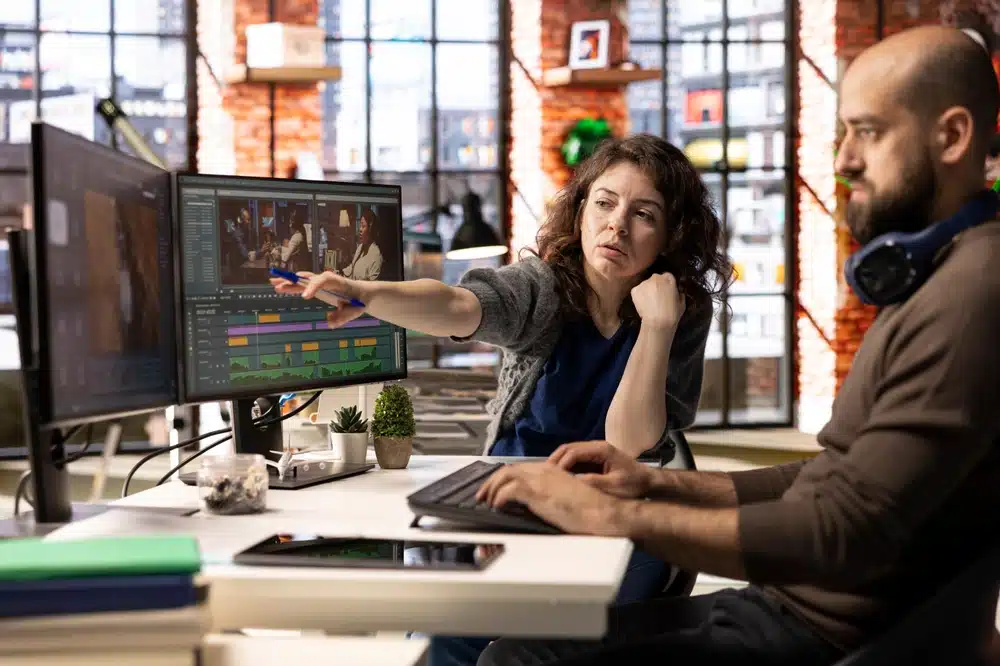How to Produce an Amazing Commercial Video
It’s almost ironic, depending on how loosely you define irony, that children are taught to stop seeking attention but entire industries exist that teach how to garner attention. Perhaps, as happens in these instances, it’s merely a matter of professional jealousy. After all, children demand attention by their nature but for a video producer, earning attention is craft and science and blood and tears.
The time constraints of commercial video production make it a challenging, and rewarding task. A producer needs to manipulate the crew to get the job done on deadline, themselves to keep everything under control, and the audience to pay attention. It’s a nefarious hattrick even for the seasoned.
Market saturation has driven the savvy to look for alternate presentations. In late 2019 cable and broadcast television was showing up to 17 minutes of commercials per hour. Being noticed among the 30+ other ad spots takes cunning and courage.
Ready to embrace the calling and forge a video project of your own? Here’s how it’s done.
Best Practices for Amazing Commercial Video
As you might expect, dropping a commercial on broadcast television is a tricky affair. Dropping the same commercial on a streaming service or online venue ensures a more curated audience but limits the offerings. Online services are trending towards only five minutes of ad time per hour.
Prices on those ad-buys are steeper but provide a better platform. Now that you have a chance, you need to deliver a solid video. To do that follow these three best practices.
Understand Your Creative Vision
To steer the ship, you need to know where you’re going and the qualities of said ship.
A finite plan lets you organize your time and other resources. It also gives you touchstones to anchor your ideas as the production faces storms and turmoil.
Before you enter preproduction you need to organize your own thoughts.
To this end, rely on the following:
- Treatments
- Scripts
- Storyboards
Each of these discrete units turns the ephemeral ideas into tangible, manageable, units.
Strong creative vision is the core of any video shoot and this goes doubly for branding and corporate video.
Be Finite, Yet Flexible
Going from a vague idea into a creative vision takes time. It also takes the cold splash of reality that is working with other people and within a budget.
A strong vision helps you get over speed bumps and around roadblocks but every correction takes some of the wind from your sails.
For example, your vision calls for a happy family navigating a crowded beach. In the current pandemic, that’s not going to be an easy shot. If you want it, it will cost you. If you want it in part, you’ll need to get creative.
This brings you to a central concept: qualify the importance.
If you qualify the importance of each element of your vision, you know where to sacrifice and where to hold fast.
Confront Budget Limitations
When the world decrees your beach shot has got to go, do you scrap the concept or find a workaround? YOur budget has the final say.
You’ll need a fair chunk of change for a digital composite shot to replace the beach shot. Perhaps stock footage is a cheaper and doable option?
Perhaps you can take the concept of the family and place it in a different context. Is the beach the most important element or is it the idea of little joys among the noise?
Is there another way to narratively frame the idea with a different shot?
The Producer’s Role: Problem Solving
As the producer of a commercial video production, you have to be ready to confront and solve problems every step of the process.
Know what you want and that provides insight. Know how to ask for what you want and that builds relationships. Know when it’s all going too far and you’ll prevent some problems from getting worse.
Getting the production to work is the job, your job. Little to nothing works the way it was presented on paper and the work expands to fill the time.
Production: The Shoot
With the planning done and a veritable toolbox of workarounds ready to go, it’s time to do the shoot.
Commercial video is marketing video, it’s meant to present and sell a product. For you, this means making sure that the budget is followed and the product meets a minimum quality.
Seek Resolution
The name of the game is facilitate. You aren’t there to control but make it happen. Let the people in the production crew do their jobs, just make sure they do their job cohesively.
If everyone is working together and working happily, things get done. As long as they are on schedule it’s all good.
Post Production: Editors Assemble!
With footage in the can, the final job is to shape the raw parts into a final vision.
You have a lot of moving pieces to work with at this stage and that means the final product can come out a number of ways.
The product needs to appeal to an audience but it also needs to appeal to the client that is paying for it all. Expect to go a few rounds of fine-tuning before you can call the project done.
Embrace the Feedback Loop
A solid production effort involves making a rough cut and then submitting it to the client. Take their feedback and refine the video.
Keep in mind the creative vision and to qualify the importance. Send the new version to the client and repeat.
You don’t want to go beyond two iterations of this. Tossing in the waves waters down the video and a finicky client is a cline that doesn’t know what they want. It’s more important to sell them on your vision than to compromise it into a mediocre slop.
Clients hire video production services because they know they want something but don’t know how to do it themselves. In the end, you need to produce the client as much as you do any second of the video itself.









![Video Production Budget Template [Free Download] 7 Video Production Budget Template](https://wearecovalent.com/wp-content/uploads/2022/04/Video-Production-Budget-Template-min.gif)